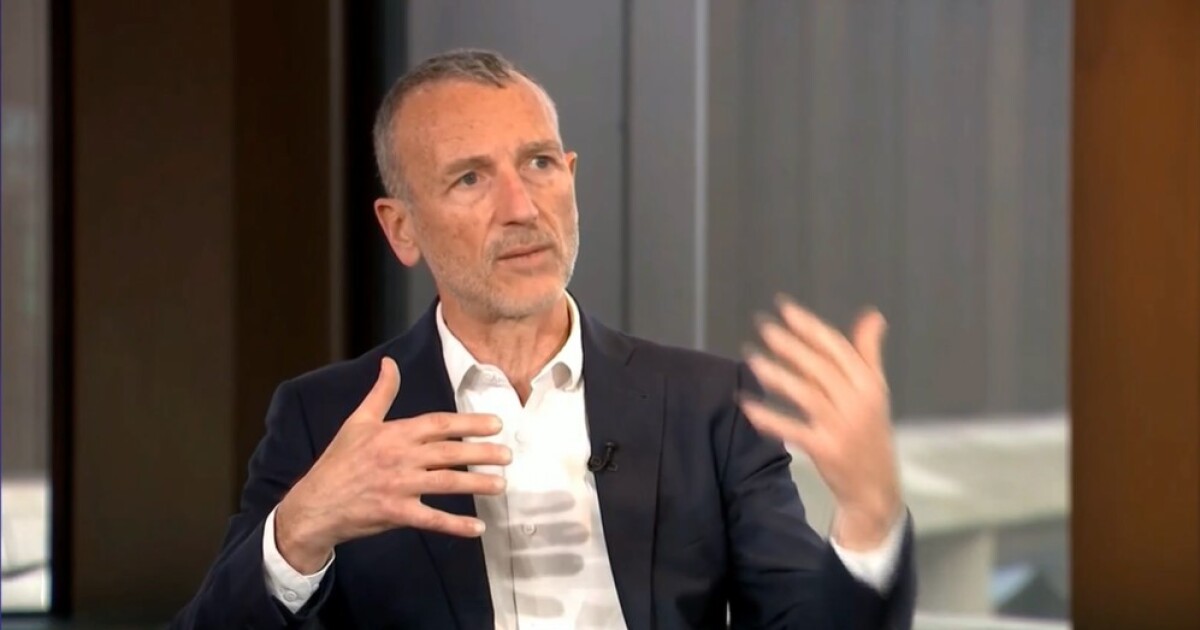WOLFEBORO, NEW HAMPSHIRE – OCTOBER 9: Republican presidential candidate former President Donald … [+]
Former President Donald Trump and his campaign advisers are discussing a corporate tax rate cut to 15 percent paid for with a 10 percent across-the-board tariff. At the same time, it is becoming increasingly clear that most of U.S. multinationals’ mobile profits are now booked in tax havens, and we suspect that even with adoption of a pillar 2 minimum tax on profits in tax havens, those profits will remain in tax havens.
However, with an additional compression of the differential between the domestic and foreign tax rates, it is possible that a large shift in those profits could be triggered from tax havens back to the United States.
The influx of taxable income could considerably reduce the revenue cost of a corporate rate cut and — under some outlying assumptions — even result in a net revenue increase for the United States.
The fundamental thinking behind this revenue estimate is illustrated in Figure 1. The vertical axis measures the corporate tax rate. The horizontal axis indicates the amount of taxable profit. The areas of the boxes are tax revenue.
The net revenue loss from a corporate rate cut is the static revenue effect of the rate cut, depicted by the lightly shaded box, reduced by the dynamic revenue effect of the profit shift into the United States (depicted by the darker box). If the revenue loss depicted by the lightly shaded box is less than the revenue gain in the heavily shaded box, the net effect of the corporate rate would be a revenue increase.
Figure 1
The major sources of uncertainty for any estimate of a corporate rate cut are potential changes in corporate tax provisions that would accompany the rate cut (for example, changes to the effective rate of tax on global intangible low-taxed income and foreign-derived intangible income); future levels of corporate profits; the portion of U.S. multinational profits in tax havens; and the response, if any, of U.S. multinationals to the cut.
Among the possible estimates of a corporate rate cut to 15 percent using various assumptions, we have one with a static revenue loss of $140 billion and a dynamic revenue gain of $70 billion, leaving us with a net revenue loss of $70 billion.
Gain With No Pain?
What we are talking about here is another manifestation of the Laffer Curve. Supply-side economist Arthur Laffer, who invented the famous curve during the Reagan era, was awarded the Presidential Medal of Freedom by Trump in 2019. Laffer is now advising Trump, who is seeking a second term.
In the economics hall of fame, the Laffer Curve is a popular attraction. It has two compelling features. First, it has indisputable logical underpinnings, which gives it credibility with economists. It tells us that an income tax with a zero rate will raise zero revenue (because 0% multiplied by any tax base equals zero dollars), and that an income tax with a 100% rate will also raise zero revenue (because 100% multiplied by income that no one will bother to earn equals zero). And it also tells us that somewhere in the middle is a revenue-maximizing rate. (See Figure 2.)
Figure 2
It is the second feature of the Laffer Curve that dazzles the public and politicians. It tells us that it is possible to cut taxes and raise revenue. Imagine a nutritionist telling you to add cheesecake and Haagen-Dazs to your daily diet to lose weight. For many politicians, the intriguing possible implications of the Laffer Curve are irresistible and the possible shortcomings too easy to ignore.
Then there is the confirmation bias of the public. We pay more attention to concepts with outcomes that we personally prefer. And to achieve a goal like deficit reduction, voters prefer painless over painful policies. (After all, that’s why we address global warming by subsidizing carbon alternatives instead of the far more efficient approach of taxing carbon.)
The problem with hoping for Laffer Curve magic is that for tax cuts to pay for themselves, we must start somewhere to the right on the revenue-maximizing rate (and move left). Although that certainly can be true, nothing in theory says that it must be so. Real-world experience tells us we are usually to the left of that peak, so tax cuts — unsurprisingly — usually reduce revenue.
Laffer Curves
There are actually several types of Laffer curves — that is, there are several types of tax cuts that give you a picture like that in Figure 2. And it is useful to distinguish them. Under what we can call the pure supply-side Laffer Curve, there can be an income tax rate cut that spurs a supply-side increase in economic growth attributable to organic increases in capital formation, labor force participation, and technical innovation. (Here, we use the word “organic” to mean supply increases that are homegrown and don’t result from shifts from other locations.)
Many people take it for granted that tax cuts have significant supply-side effects. Based on truckloads of (admittedly mixed) evidence collected over decades, the degree to which those effects exist is probably significantly less than widely believed.
Furthermore, nobody schooled in tax policy believes tax cuts can increase organic economic growth so much that they pay for themselves, but for politicians who want the deficit under control as well as tax cuts, this is their go-to line. And plan on hearing it a lot from Republicans who want to extend the Tax Cuts and Jobs Act provisions that will expire at the end of 2025.
Another version of the Laffer Curve is what we will call the tax planning Laffer Curve. A cut in tax rates may significantly increase taxable income without necessarily any increase in the economic income (or GDP). The idea is that when tax rates are lower, there will be less investment in tax-favored vehicles — and more compensation paid in taxable wages and less paid in tax-free fringe benefits.
In 1996, when Bob Dole was running for president and proposed rate cuts, economist Martin Feldstein argued that the taxpayer response to lower rates would significantly reduce the cost of the Dole proposal.
Senator Bob Dole gives the “thumbs up” sign during a presidential rally. Senator Dole won the … [+]
Then there is a capital gains Laffer Curve. Whenever economists estimate the revenue effects of a capital gains tax cut, there is a large static negative revenue effect from the lower rate, offset by a large dynamic positive effect from increased realizations. The net effect can be either positive or negative, and it is highly sensitive to a wide range of assumptions (most of which can be reasonably justified by one study or another).
Finally, and perhaps most important, there is a locational Laffer Curve. Again, there may be no change in overall economic output from a tax cut, but a rate cut in jurisdiction A could easily result in a shift in productive capacity (capital or labor) or perhaps just the income from capital and labor of jurisdiction B. There might be no increase in overall economic growth, and there even could be a reduction in the overall size of the economy if the tax differential creates distortions.
But of course, politicians and citizens in tax-cutting jurisdiction A don’t care about jurisdiction B, so any loss to B and to overall economic output is acceptable as long as there are gains in jurisdiction A. For those folks, the Laffer Curve they pay attention to has only their own jurisdiction’s revenue on the horizontal axis.
In May 2012 Republican Gov. Sam Brownback signed the biggest tax reduction in Kansas history that included a cut in the top individual rates and the complete exemption of all passthrough business income. With Laffer as his adviser, Brownback said the tax cuts would pay for themselves.
Unfortunately, the hoped-for boost to the Kansas economy didn’t materialize. General fund revenue declined significantly, leaving Kansas government finances in a state of turmoil. Out of necessity, Brownback had to agree to tax increases in 2013 and 2015.
Closing the Gap
The locational Laffer Curve is all-important in the international realm. All the time and almost everywhere, nations are trying to lure economic activity and mobile profits into their jurisdictions. Increased globalization and digitalization have created more opportunity than ever for jurisdictions to cut taxes in a manner that could raise revenue.
Today’s circumstances may be providing the United States with the opportunity to take advantage of some favorable Laffer Curve effects. The reduction of the differential between the U.S. and foreign effective tax rates for U.S. multinationals orchestrated by the TCJA apparently hasn’t created the hoped-for repatriation of U.S. multinational profit to the United States.
And there is good reason to believe that even with a 15 percent pillar 2 minimum tax on profits in tax havens, those profits will remain in tax havens. But that doesn’t mean there are no further policy changes that could reduce or eliminate the differential and cause a large-scale shift of profit back to the United States.
In an up-to-date, comprehensive, and matter-of-fact overview of pillar 2 developments, Sol Picciotto said about the revenue effects: “The United States should rightly expect to gain from the internationalization of the GILTI regime under the GLOBE rules.” But with a pillar 2 rate of 15% — most likely directing the revenue gains from pillar 2 to tax havens that will institute new domestic minimum taxes — conditions are ripe for the United States to lose revenue.
What would be a rational response for the United States? Picciotto suggests that for policy and revenue reasons, the pillar 2 minimum tax rate should be raised to something close to 21%, as the Biden administration has proposed. He points out:
“The present minimum rate of 15% still leaves a substantial gap with the U.S. headline rate of 21%. It is because of this gap that estimates of the impact of the GLOBE rules, including those in the JCT report, can reasonably assume significant continued profit shifting to conduit countries. If the United States were to both align with the GLOBE framework and adopt a minimum ETR of 20%, the JCT’s estimates show that U.S. losses would turn to gains.”
Although the Trump campaign and Biden administration views are miles apart on the future of pillar 2 — the Trump camp would like it eliminated; Biden would like it adopted — their approaches have one thing in common. Both could increase profit shifting into the United States by reducing the all-important gap between the minimum tax rate and the U.S. statutory rate.
To do that, Trump and company would lower the U.S. rate. Biden could come at it from the other direction by raising the minimum rate. While Biden proposed a minimum rate of 21% and an increase in the standard rate to 28%, Picciotto suggests a minimum rate of 20% on the assumption the headline rate stays at 21%.
(COMBO) This combination of pictures created on October 22, 2020 shows US President Donald Trump (L) … [+]
Of course, the overall revenue effect of Biden raising the minimum tax rate would be larger than that of the Trump approach because there would be a static revenue gain from a rate increase combined with a revenue gain from the inbound profit shifting.
The Trump approach has revenue gains from a similar amount of inbound profit shifting, but those positive dynamic effects are offset by the static revenue losses from the rate cut (like those shown in Figure 1).
The table provides a pair of rough revenue estimates of a proposal to cut the U.S. federal corporate tax rate to 15%. Both follow what can be seen in Figure 1 — that is, there are static negative revenue effects of the rate cut and dynamic positive revenue effects of increased taxable profits.
In our first, middle-of-the-road estimate, the static annual revenue loss for 2025 is $140 billion and the offsetting dynamic gain is $70 billion (which only by chance is exactly half of the other amount). The net revenue cost of the proposal is $70 billion.
The second estimate is deliberately results-driven. From a wide range of possible assumptions, we chose a set that minimized negative revenue effects. We pushed and got a result of the rate cut having a net positive effect of $2 billion on corporate revenue in 2025. The details of these estimates are discussed in the notes at the end of this article, and energetic readers can adjust assumptions and do their own estimates using the downloadable spreadsheet in my Tax Notes article.
Could the rate cut pay for itself? Nobody really knows the answer to that question. The more relevant question for policymaking is: Can there be estimates that a corporate rate cut to 15% will raise revenue? The answer is yes, especially if Laffer is on the scene.
But our guess is that official estimates from the Joint Committee on Taxation and Treasury Office of Tax Analysis are likely to show revenue losses. The important point is that because of the potential for large amounts of profit shifting into the United States under the unique circumstances that now exist, the estimated revenue losses may be significantly smaller than most would expect.
Notes on Estimates
For the static component of our two estimates, we start with the Congressional Budget Office’s most recent projection for corporate tax revenue in 2025. Then we simply assume revenue will decline proportionately with the reduction in rates — that is, by (21 – 15)/21 or by 28.6%.
For our alternative estimate, we assume the headline corporate rate cut to 15% would be accompanied by a repeal of the deduction for FDII, especially because those tax benefits to corporations could be negated by pillar 2 minimum taxes.
For the dynamic portion of our middle-of-the-road estimate, we start with the average of three measures of foreign profits of U.S. multinational corporations in 2019: adjusted Bureau of Economic Analysis data from U.S. multinationals’ financial statements, adjusted (before tax) direct investment income data, and S&P 500 foreign earnings before profit reported on Form 10-K reports.
These are explained more fully in a prior analysis (Tax Notes Federal, Aug. 21, 2023, p. 1207). (Although data for all three are available for 2020, we chose to avoid the potential distortions from the pandemic in that year.)
To extrapolate that amount of profit to 2025 levels, we used the ratio of actual corporate profit as recorded by the CBO to CBO projected corporate profit in 2025.
Based on recent research by Felix Reitz (“Revenue Effects of the OECD Corporate Tax Reform — An Updated Impact Assessment of Pillar Two,” Working Paper No. 2023-17, Institute of Public Finance, Fiscal Law and Law and Economics, Table 15 (July 2023)), we assumed that 90% of U.S. multinationals’ foreign profits were in tax havens, and then we assumed that 75% of those profits would be repatriated to the United States, which is consistent with the JCT’s upper-bound revenue estimate of pillar 2 effects. The dynamic positive revenue effect was equal to 15% multiplied by the dollar amount of repatriated profits.
For the dynamic portion of our alternative estimate, we started with a larger estimate of foreign profits in 2019 by including in our averaging a fourth data set, country-by-country report data collected by the IRS. We then increased the assumed portion of foreign profits in tax havens from 90% to 95% and the assumed portion repatriated to the United States from 75% to 95%.
Our middle-of-the road estimate assumed that there would be no impact on underlying economic activity from the rate cut. In our alternative estimate, we assumed growth in the real activity of the corporate sections — that is, growth attributable to increases in capital formation and labor supply — would boost taxable profit by an additional 5%.
Two Revenue Estimates of a Corporate Rate Cut to 15 Percent
Credit: Source link






![Workplace Loneliness Isn’t Getting Better [New Data] Workplace Loneliness Isn’t Getting Better [New Data]](https://www.hubspot.com/hubfs/workplace-loneliness-1-20241105-880851.webp)




